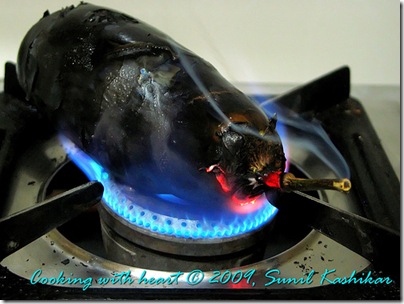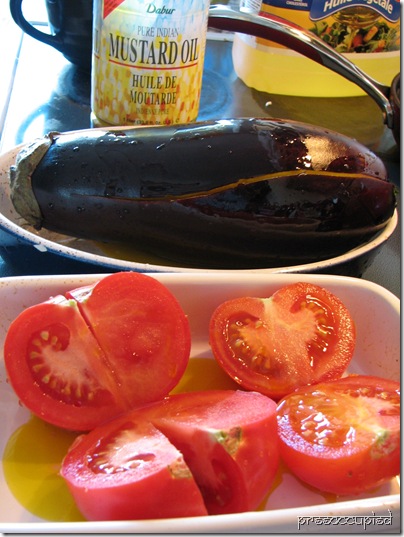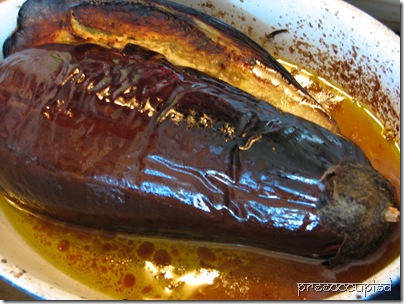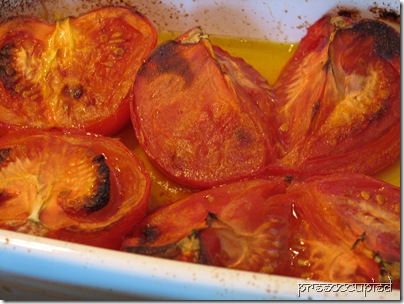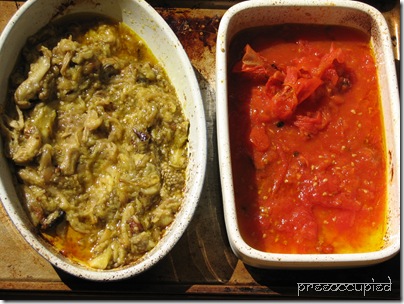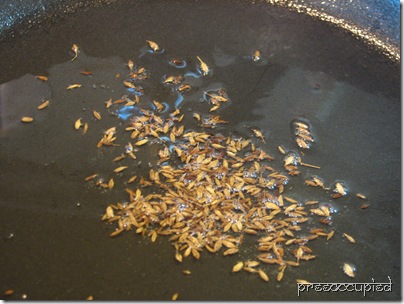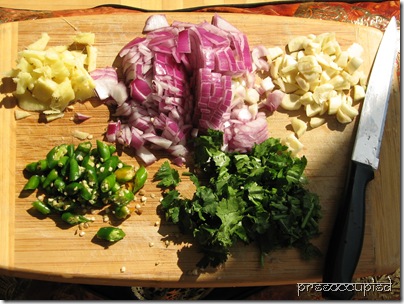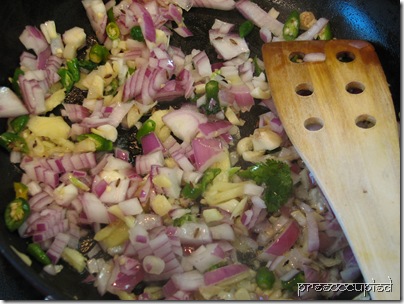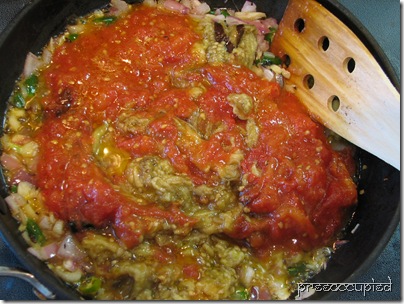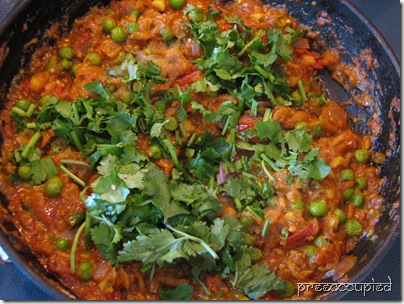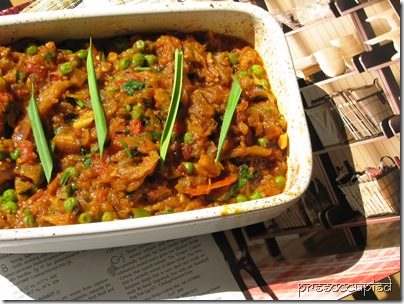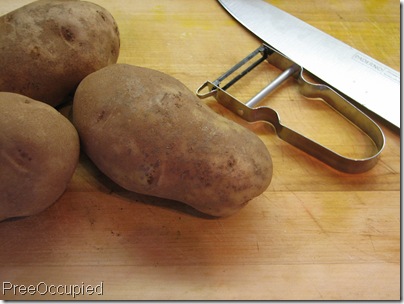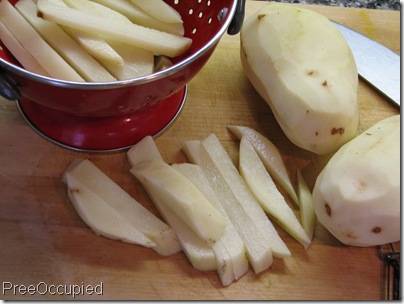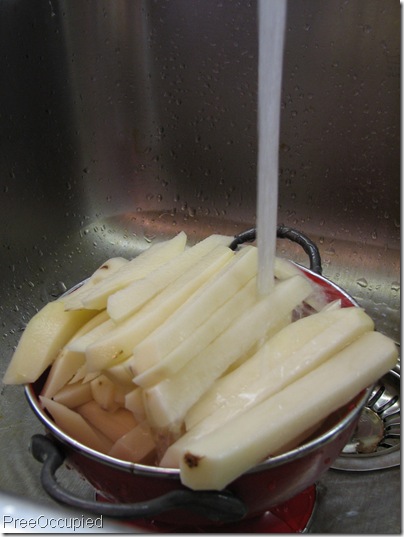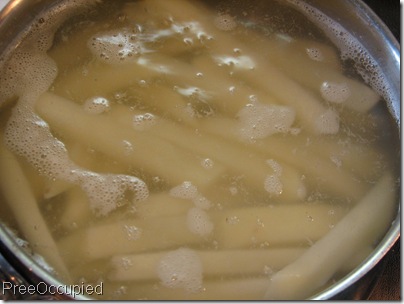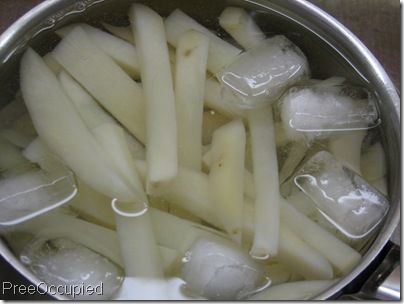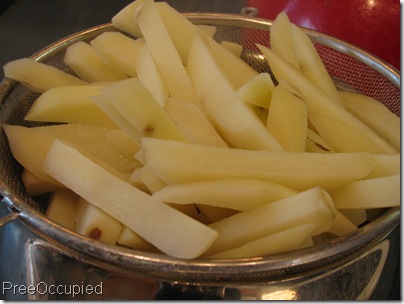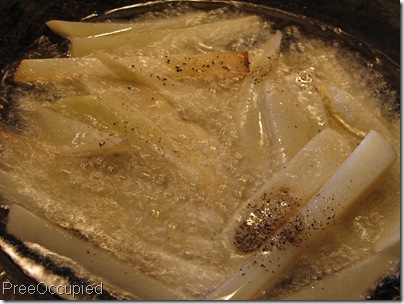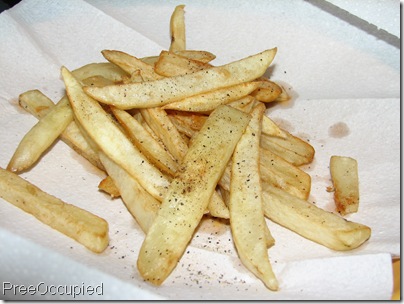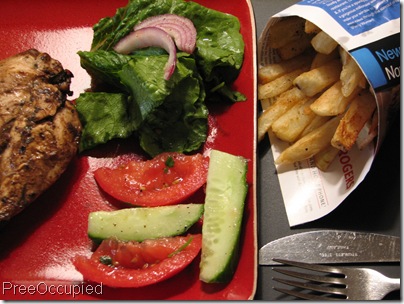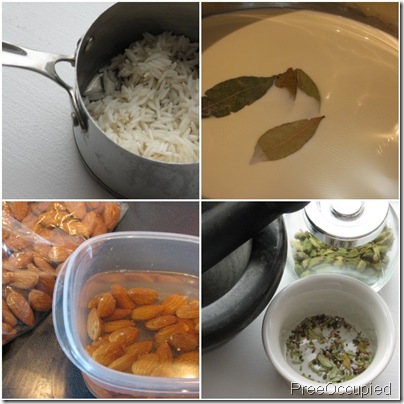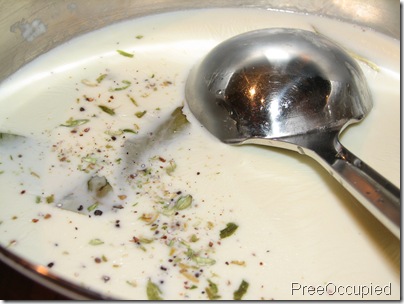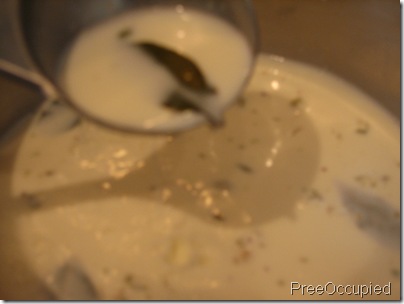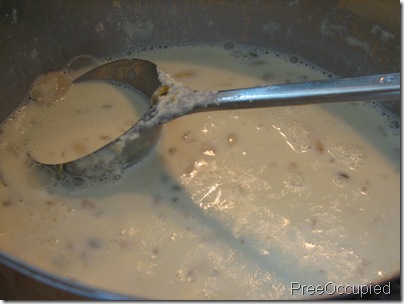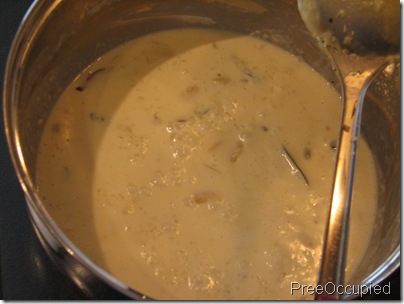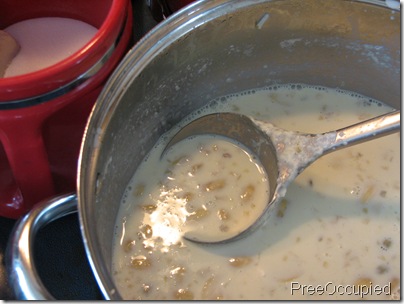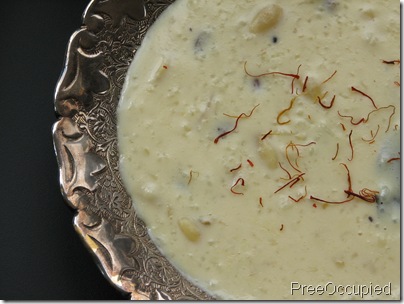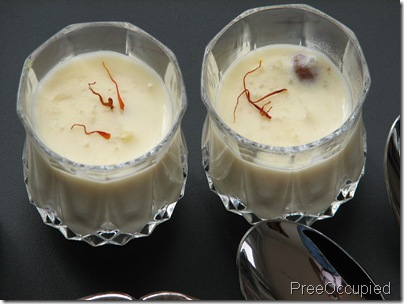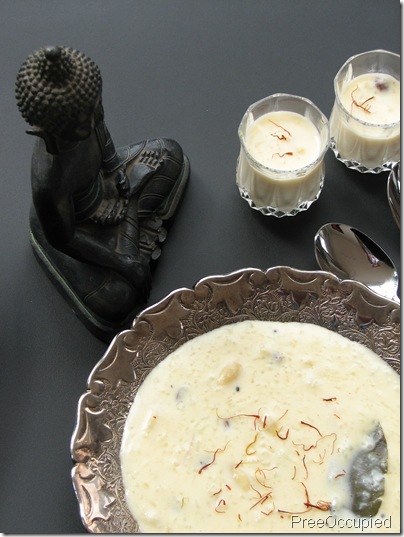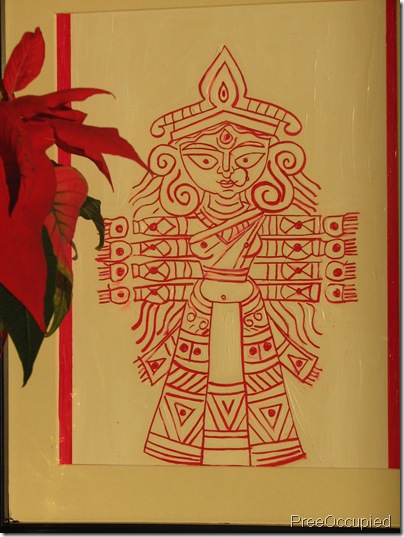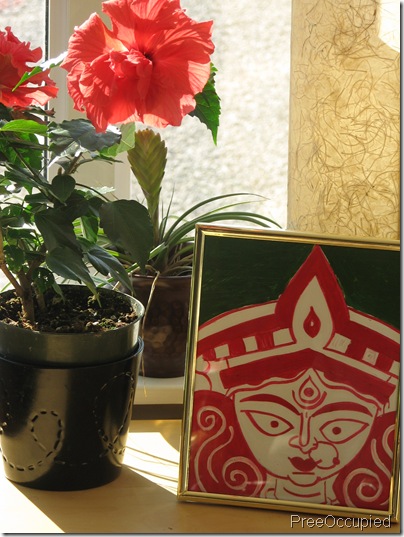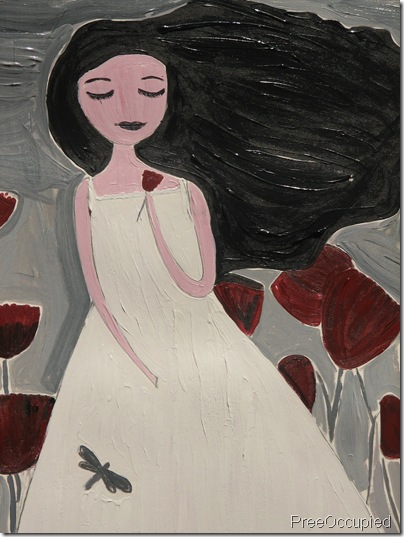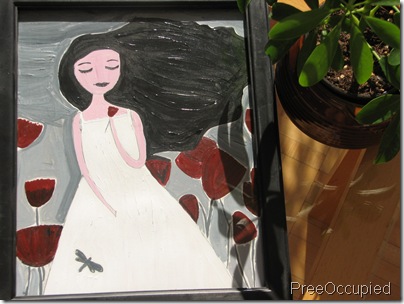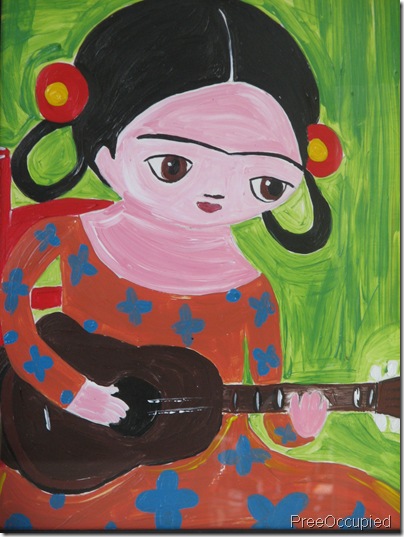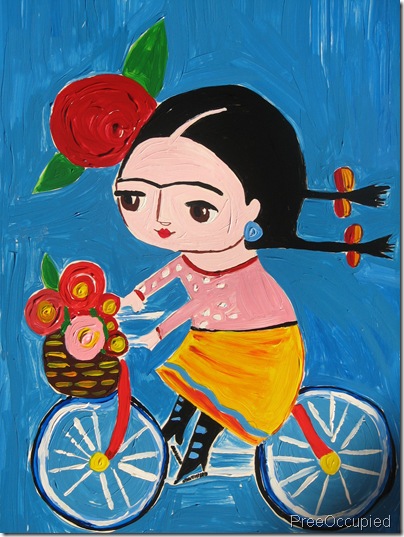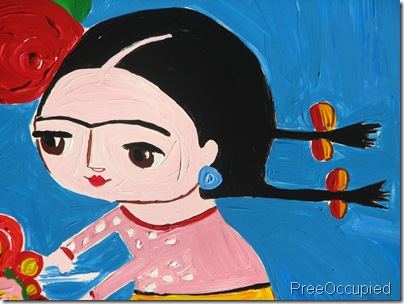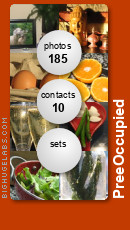Now this one was really made on the go! I had absolutely no idea which way was this recipe heading to. I had a bag of frozen, headless Pacific White prawns, a can of coconut milk from a Thai store and Indian Basmati rice, which was “Made in Texas”!
How could I possibly go wrong if I set off to make Prawn Biryani with such gourmet ingredients. The only problem was – I had no recipe or notes from my Mum to fall back on. Plus I had never had Prawn Biryani ever, so relying on my own taste buds was not an option either.
But I had the courage of my own culinary convictions. So I set out into mixing flavors and recreating some tastes, cautiously taking measured mental notes of the ingredients lest I forgot when I chronicled it for you…
Ingredients for the Prawn Biryani are:
One and half cups Basmati rice, washed, then sieved for 30 minutes
500 grams prawns/ shrimps (they were already deveined, but with shells on which I removed, so my guess is after the cleaning up, they would be about 400 gms)
One tennis ball-size red onion finely sliced
7-8 cloves of garlic
Two inch piece of root ginger
Handful of green chilies
Handful of coriander leaves
Few drops of lemon juice
One heaped teaspoon of red chili powder
One teaspoon of turmeric powder (heaped if you love turmeric)
One teaspoon of black pepper powder
One cup coconut milk (I used the thick, creamy variety)
Two tablespoons vegetable oil
Two cardamoms (green and black)
One inch stick of cinnamon
Two bay leaves
One star anise (its okay if you don’t have it)
Half teaspoon of black cumin seeds
Little piece of nutmeg grated
Salt
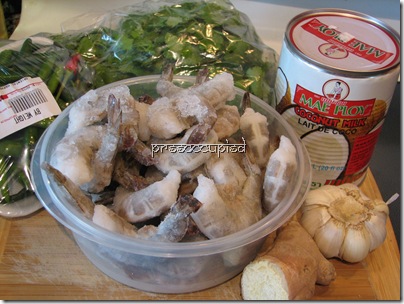 In a bowl, marinate the prawns with the red chili powder and turmeric and a few drops of lemon juice.
In a bowl, marinate the prawns with the red chili powder and turmeric and a few drops of lemon juice. 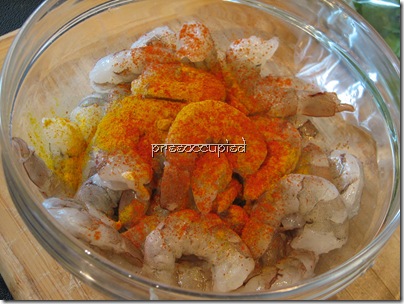 In a frying pan, heat one tablespoon oil and fry the sliced onions. Grind the ginger and garlic (together) in a paste and make a smooth chutney with the coriander leaves and green chilies (separately). When the onions start turning brown, add the ginger-garlic paste and fry for a couple of minutes. Now add the coriander-chili chutney. Sauté for 3-4 minutes on low-medium heat. Add the prawns and mix well. Add black pepper powder and salt, stir for a few minutes on the same heat and remove when the prawns start turning pink/orange at the tails. Prawns take very little time to cook and overcooking them is such a blasphemy!
In a frying pan, heat one tablespoon oil and fry the sliced onions. Grind the ginger and garlic (together) in a paste and make a smooth chutney with the coriander leaves and green chilies (separately). When the onions start turning brown, add the ginger-garlic paste and fry for a couple of minutes. Now add the coriander-chili chutney. Sauté for 3-4 minutes on low-medium heat. Add the prawns and mix well. Add black pepper powder and salt, stir for a few minutes on the same heat and remove when the prawns start turning pink/orange at the tails. Prawns take very little time to cook and overcooking them is such a blasphemy! 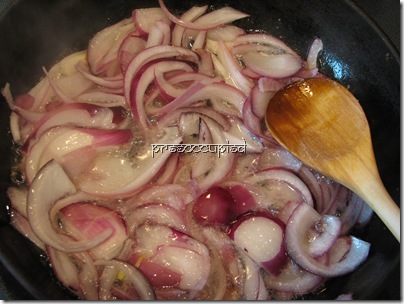
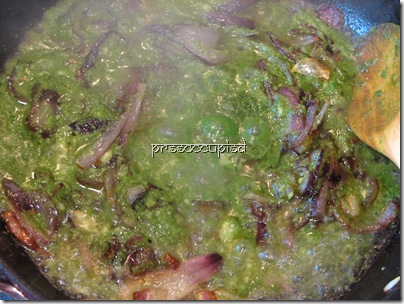
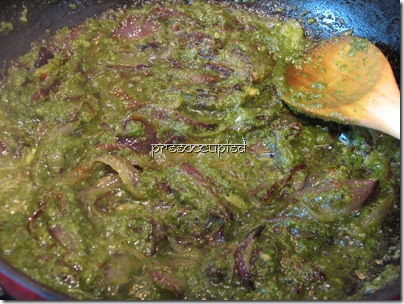
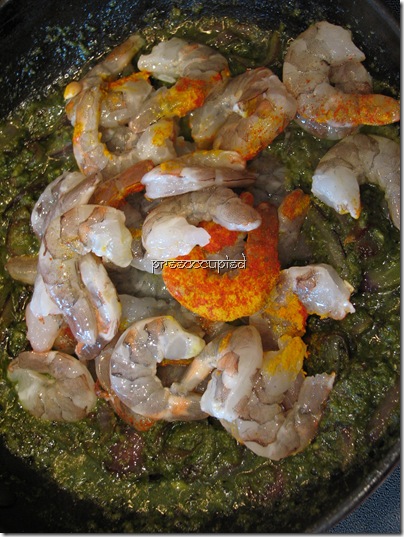
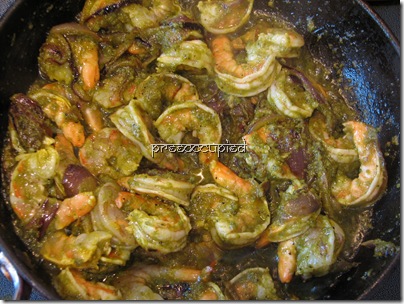 In another frying pan, heat the remaining one tablespoon vegetable oil, add the bay leaves, cinnamon, cardamom, black cumin seeds, star anise and stir for a minute. Add the rice and fry till the grains get coated with the oil. Add the grated nutmeg (about a pinch), and salt (carefully as our prawns already have some). Fry for 3-4 minutes and remove from heat.
In another frying pan, heat the remaining one tablespoon vegetable oil, add the bay leaves, cinnamon, cardamom, black cumin seeds, star anise and stir for a minute. Add the rice and fry till the grains get coated with the oil. Add the grated nutmeg (about a pinch), and salt (carefully as our prawns already have some). Fry for 3-4 minutes and remove from heat. 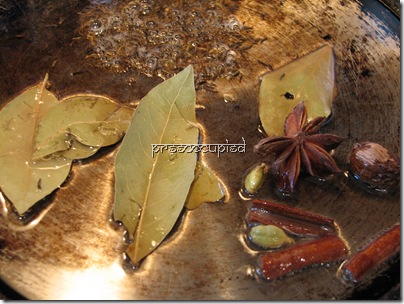
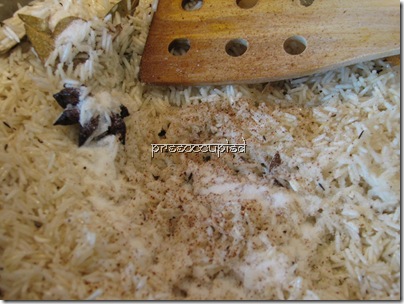 In a microwave safe bowl, add the rice, cooked prawns, one cup of thick coconut milk and one cup plus two tablespoons of water. Make sure you use the same measuring cup for the rice, coconut milk and water!
In a microwave safe bowl, add the rice, cooked prawns, one cup of thick coconut milk and one cup plus two tablespoons of water. Make sure you use the same measuring cup for the rice, coconut milk and water! 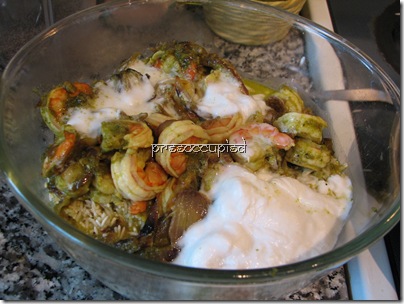 Give all the ingredients in the bowl a quick stir and cover with plastic wrap. Microwave the Prawn Biryani for 20 minutes. Check and adjust the seasoning if needed. Let it sit for about an hour before you serve.
Give all the ingredients in the bowl a quick stir and cover with plastic wrap. Microwave the Prawn Biryani for 20 minutes. Check and adjust the seasoning if needed. Let it sit for about an hour before you serve. 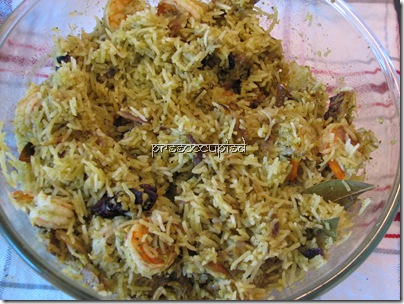
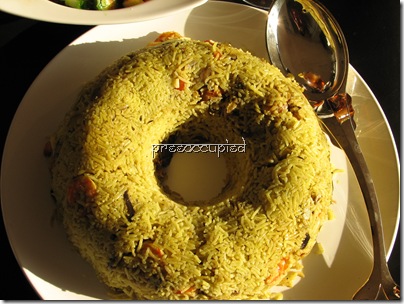
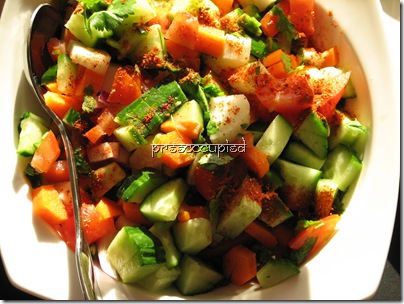
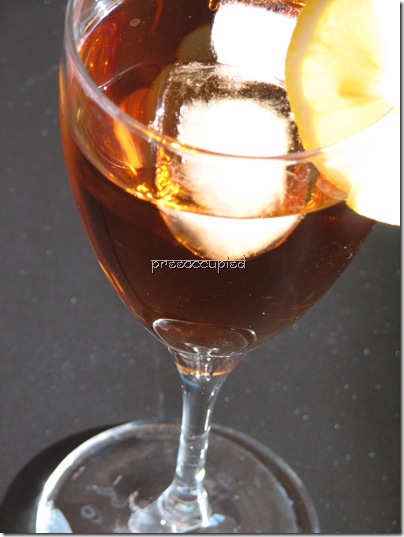 I served it with some chopped greens and a glass of cool iced tea. And yes, its okay to reheat this dish in the microwave before you eat.
I served it with some chopped greens and a glass of cool iced tea. And yes, its okay to reheat this dish in the microwave before you eat. 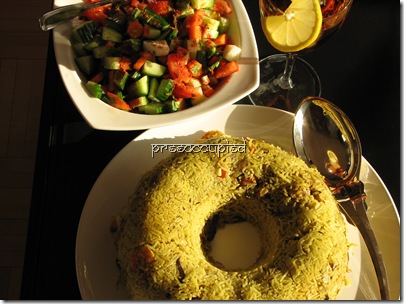 This Prawn Biryani is a big revelation for me, and I am still savoring it because that’s all there is to it!
This Prawn Biryani is a big revelation for me, and I am still savoring it because that’s all there is to it!

